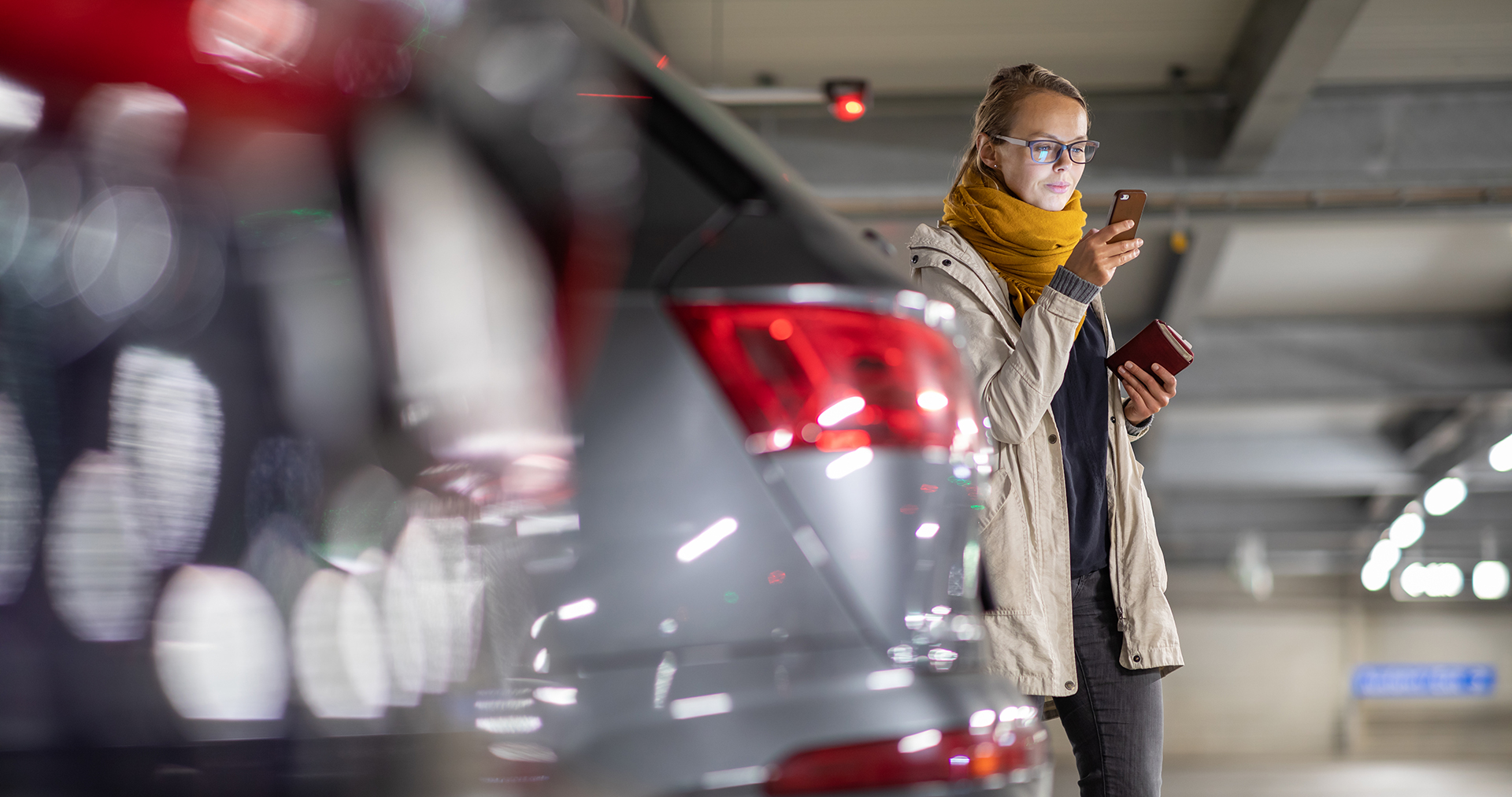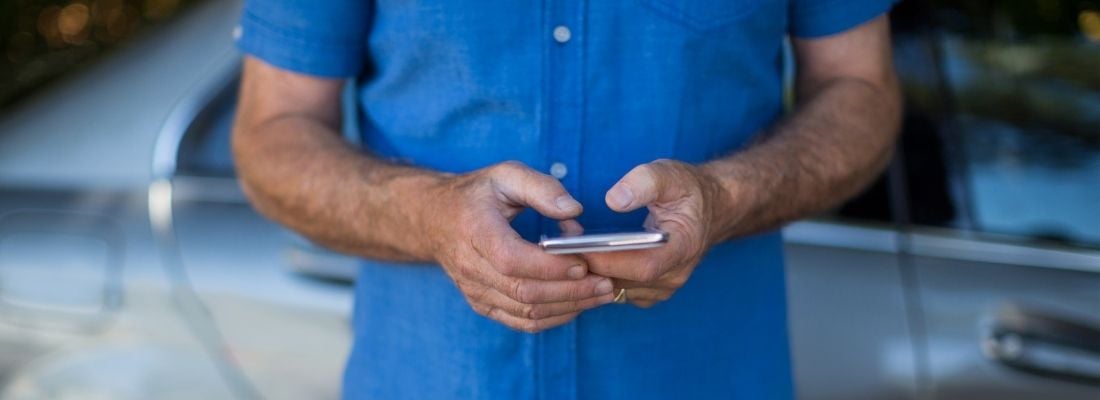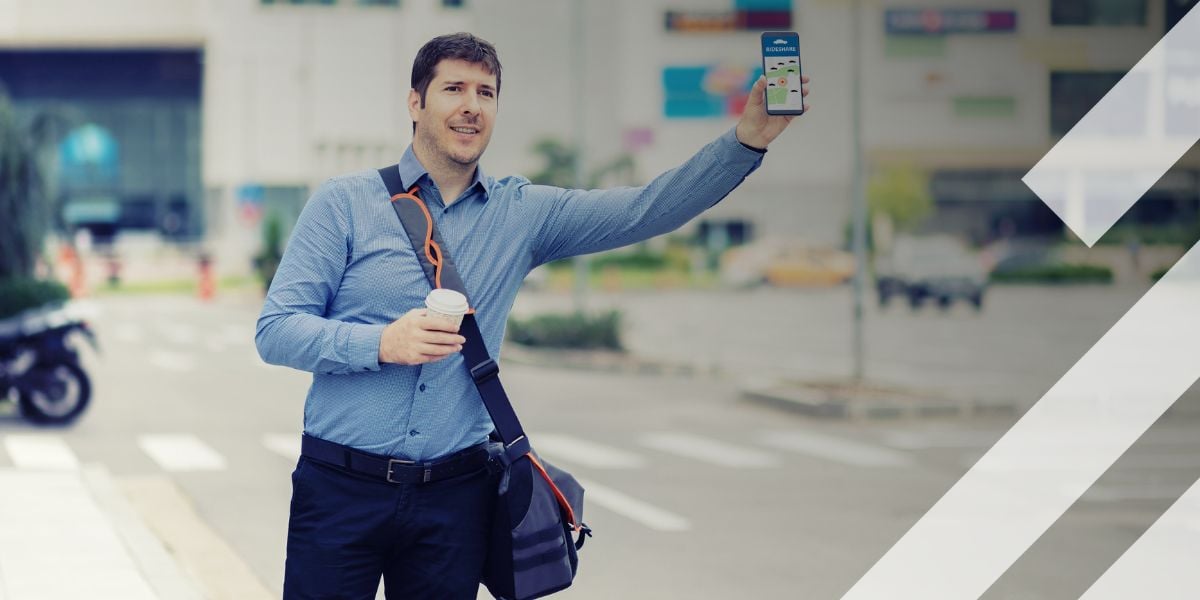Parking as a Service: PaaS, Present and Future
Over the past few years “Mobility as a Service” has become a commonplace term in transport-related conversations across the world. MaaS offers travellers numerous benefits in our quest to be ever-more mobile, offering subscriptions to mobility services that make our journeys smoother, more efficient, safer and, ultimately, cheaper. But what about Parking as a Service?
How far into the future do we have to look in order to see a time where PaaS is as a must as MaaS? And, perhaps more to the point, what does PaaS entail? Those answers rather depend on which smart parking expert you choose to ask – so Intertraffic asked five in order to get an accurate sounding of just what PaaS encompasses and where it is in terms of development and implementation.
Smart parking in 2035
“Imagine we are in the year 2035,” says independent mobility expert Frank Beckmann. “Autonomous ride- and car-sharing fleets are cruising through the streets transporting passengers at high utilisation rates from A to B. When the utilisation rate drops below 30% a car will be taken out of service and the remaining usage will be allocated to other cars for the sake of cost efficiency. Now this car, which is taken out of service, needs to park. But there is no driver inside. So, it cannot be the driver who chooses the car park - it will be the car that chooses where to park.
What will be the criteria of the car? Is it price? Is it distance? Is it connectivity? Most likely it is a service agreement with a digital Parking as a Service (PaaS) operator who established an algorithm to park the car. The PaaS provider will take over a car from the fleet operator, parks and services the car based on prediction, and returns the car at a certain time at a certain location. The car park will become a logistic warehouse for cars parking autonomously side by side. This is Parking as a Service.”
Parking now
So that’s the future of parking encapsulated into a paragraph but what of the present?
Marek Stawiński, CEO and founder of NaviParking says that the main advantage of PaaS technology is that parking assets can be digitalised and made fully touchless and cashless.
“With PaaS, this can be done quickly and at a low cost. We offer customers the ability to use a mobile application to pay, eliminating the necessity to use cash machines and to wait in queues. It is not just about saving time but also about preventing contact with external surfaces and the parking staff. The pandemic brought about an increased need for safety and one of the measures taken to prevent the spread of the virus is the introduction of touchless interactions with processes and transactions. Touchless and cashless payments are the future.”
NaviParking, based in Gliwice, Poland, have created a platform that provides publicly available, real-time information about nearby available parking spaces and structures. Enabling owners of parking spaces to rent them.
Do you want to know more about the latest developments on Parking as a Service?
Join Intertraffic ON AIR on the 22th of June.
“The pandemic has also disrupted businesses,” says Stawiński. “As a result, a lot of parking assets are empty. We can see this in the enterprise context, where many employees are continuing to work remotely. Our solution, through PaaS technology, allows for the introduction of a shared parking concept so all employees can park with much less parking capacity. At the same time, we offer owners of the buildings monetisation of overcapacity of their leased parking lots. This is an opportunity to change the city plans and emphasise the importance of recreation and green spaces, which can be created thanks to the reduction of parking infrastructure.”

Photo: NaviParking
“PaaS technology, allows for the introduction of a shared parking concept so all employees can park with much less parking capacity”
Digitalisation makes parking assets much more efficient by unlocking the existing parking capacity, which, as Stawiński maintains, is currently hidden at all kinds of business centres and buildings. That will reduce the need to build new parking facilities that will have a positive impact on the cost, the environment and the well-being of inhabitants.
Flexible parking and shared parking economy
“The pandemic has brought around a lot of changes,” he admits. “Suddenly, lots of players in the smart city domain have been forced to rethink their business models, for example, about the way parking is being managed and leased. The traditional model, based on fixed parking spots, does not work anymore. Equipping drivers with parking solutions on their smartphones completely changes the business model. That is what we call a shared parking economy. This change to the business model is a win-win for everyone: enterprises, drivers, owners… everyone will benefit.”
On the misconception that the implementation of smart parking technologies results in more cars in the city centre, Stawiński offers a concise rebuttal.
“Our goal is to not only reduce the number of parking lots being built but also to reduce the number of cars coming into the centre of the city by providing drivers with information about parking lots surrounding the city and about available alternative means of transport. This will be accomplished when we build the right infrastructure and have all the parking lots on our platforms. Right now, we are working on the first step, which is solving the problem of existing cars in the city.
“PaaS is an opportunity to create an ecosystem around parking,” he concludes, “so parking lots can be transformed into multimodal mobility hubs where all kinds of services can be deployed. We are shaping a smart world built on sustainability and innovation.”
Demand pricing solutions
For Holly Cooper, Vice President and General Manager for Public Safety and Curbside Management at Conduent Transportation, the COVID-19 pandemic has played an unwittingly sizeable role in accelerating many behavioural and economic shifts. In the parking industry, it’s speeding the pace of movement away from traditional, manual parking enforcement and permit operations to new ways of doing business.
“We see many municipal leaders eager to modernize parking operations, embracing Parking as a Service (PaaS) by investing in technology-driven solutions that leverage advanced analytics to optimize a wide array of kerbside operations,” she explains. “This includes everything from pricing to the allocation of enforcement personnel, reducing carbon emissions, and improving long-term financial sustainability by increasing potential revenue opportunities.”
Many of Conduent Transportation’s clients have embraced PaaS via the company’s solutions, especially its demand pricing engine. Data-driven analytics is helping these municipal leaders better understand supply and demand block by block to price their resources appropriately and help drivers find parking spots, reducing time spent cruising for parking.
“Perhaps this is why our clients have won the National Parking Association’s Innovative Project of the Year for the last three consecutive years,” Cooper suggests. “Washington DC., for example, won in 2018 for its demand pricing program. Columbus, Ohio, won in 2019 for its virtual residential parking permit program, which was the first in the US. And Los Angeles won in 2020 for its assistance programs designed to help residents impacted by COVID deal with their parking tickets.”
In US cities, as kerbside demand returns, Cooper says that pre-COVID 19 occupancy levels are now being observed in many communities.
“Capturing kerbside occupancy data doesn’t need to be expensive, and cities are beginning the migration to PaaS in a sustainable way”
“Though the return has been uneven and varies block to block, the difference largely depends on the types of businesses located on each block. As one might suspect, kerbside demand is returning faster on blocks with groceries, delis and outdoor space. There's less demand on blocks primarily served by restaurants, movie theaters, and other venues that host large events, where COVID-19 may be spread more easily.
The shift in kerbside use underscores the opportunity for cities to rethink kerb value based on societal needs, such as congestion mitigation, promoting health and safety, and optimizing access and social equity. Capturing kerbside occupancy data doesn’t need to be expensive, and cities are beginning the migration to PaaS in a sustainable way. Spatial and temporal sampling offer opportunities to collect meaningful data, reducing costs by using analytics to optimize the location of sensing technology and communications infrastructure.
“Once municipal leaders understand the redistribution of demand, they can optimize kerb use, often using publicly available data. City officials can improve kerb use iteratively through demand pricing, or through the reallocation of assets, or both. We have the technology, expertise and global roach to help them regain resilience, improve accessibility and achieve their most mission-critical PaaS goals.”
Mobility hubs: Parking part of mobility
Frank Beckmann, founder of Consulting For Future, insists that we face a significant transformation within the parking sector.“Parking needs to be seen as part of mobility. The value chains need to be re-defined and new business models within the mobility ecosystem have to be developed. The parking revolution is about to start. But what will happen and where does the parking industry head to? The current trend is all about mobility hubs. So, car parks will be transformed into mobility hubs and mobility stations. It is not about simply parking your car but to provide seamless mobility options within a parking structure,” he explains.
“Parking needs to be seen as part of mobility. The value chains need to be re-defined and new business models within the mobility ecosystem have to be developed”
“The needed set of mobility options should be defined based on a sound customer group analysis of the individual location within the relevant catchment area. Profitability will still come from parking. For the alternative mobility new business models have to be created together with players from the mobility industry.
Co-operations will enable demand aggregation and corresponding scaling in order to become a successful player within this new market segment. Alternative mobility (mobility hubs) and new business models such as Space as a Service will fill the underutilized capacity of car parks and increase profitability without raising tariffs constantly. This is also necessary when in 2025 the tipping-point in car sales and increased shared mobility will result in less car traffic and entries decreasing occupation rates and thus parking revenues.”
Parking needs love
AppyWay’s Head of Mobility, Ben Boutcher-West, highlights some of the projects his company have been driving in order to promote parking further up the smart mobility ‘pecking order’, and PaaS is one such tool at his disposal.
“I’ve said publically how I have sometimes felt parking is the unloved child of mobility and parking tickets a nemesis to the improved provision of access new transport technology offers. I believe that is now changing however as local authorities and central Government start to rebrand kerbside management, and parking in particular, as an enabler rather than a blocker. At AppyWay, we have worked hard to be an advocate for this evolution and have done a lot of thinking, developed a lot of concepts and secured some key clients, which all strengthen this approach and help drive adoption.”
In February 2020, together with Jaguar Land Rover, Milton Keynes Council, Coventry Council and White Willow Consulting, AppyWay concluded its ParkAV Innovate UK project which, amongst other themes, promotes the opportunity of Parking as a Service (PaaS) as an enabler for Autonomous Vehicles.
“We interpret parking as an enabler from within the supply base, which should help the smooth integration of transport players with cities.''
“Within that proposal we settled on a hybrid of PaaS that was far more applicable to the entire transport and mobility ecosystem: MaaSPark. MaaSPark introduces the idea of parking as an enabler, acting in service to the existing ‘as a Service’ models. We interpret parking as an enabler from within the supply base, which should help the smooth integration of transport players with cities. While we welcome the continued focus on parking and certainly identify with it’s independent role, the true value of kerbside as a piece of real estate, as an asset for cities, should always, in our opinion, be seen as an enabler.”

Photo: Appyway
With the continued adoption of electric vehicles and shared transport, consumers are welcoming in a generation of improved convenience, less complexity and optimised billing, says Boutcher-West.
“I like to imagine a future world where I can make human choices about my journey with requests such as ‘take care of my mobility, ensure I arrive by 8am and please keep me out of the rain.’ The enabling factors to these requests are hidden, the consumer experience is optimised to meet their priority objective and access is provided.
“Future mobility human request should be ‘take care of my mobility, ensure I arrive by 8am and please keep me out of the rain.”
Today’s on-street parking set up is fraught with manual consumer inputs such as ‘where can I park, is it available and how do I pay when I get there?’ True, seamless, transport and mobility would potentially see parking hidden within a wider service, with the mode of transport taking care of its own kerbside compliance. When I order a takeaway I don't usually specify how much the driver will be paid, I review the total price of getting a meal of my choice delivered and usually accept! Once parking becomes a true enabler, I could imagine making end-to-end journey plans with parking accounted for and handled by hidden providers.”
Terminology of PaaS
A different perspective is offered by David Pickeral, mobility expert, transport veteran and Chief Strategy Officer of Sheeva. “In recent years Parking as a Service (PaaS) has emerged along with Mobility as a Service (MaaS) joining the pantheon of ‘as a Service’ offerings that the entire tech sector seems obsessed with. A particular problem with PaaS, especially in North America, is that the term (in this case relating to Platform as a Service) had even earlier emerged as a term proliferated by cloud services providers. Beyond that Paas is also an iconic brand of Easter Egg products!”
Joking aside, Pickeral has a serious point to make about terminology and acronyms.
“A related vexation I have experienced in TranspoTech involves how once well-established industry terms have been applied to often vastly different purposes, or have descended into the lexicon of buzzwords prompting more eye rolling than action. DSRC, Last Mile, RUC… any number of industry terms that I once thought I knew the meaning of have, especially when picked up, digested and regurgitated in popular media, become as clear as mud.
Sometimes the vocabulary can (and should) be changed. Microtransit has replaced jitney. V2X, V2V and V2I have come online to allay the confusion around what connected vehicle technologies do, and such words as micromobility have been added to the transportation lexicon representative of the innovative concepts they represent.
The Virginia-based former lawyer suggests that one essential element perhaps needs additional thought to ensure that in the case of public-private efforts the substance outstrips the verbiage.
“My message to PaaS advocates is that this acronym is full, kindly wait for the next one or better yet why not come up with an even more descriptive term for the next generation of parking, especially in North America. The difference between a High Occupancy Vehicle Lane (HOV) and a parking space is not all that great. Each is, after all, an asset with finite capacity, an open opportunity to exert time and capacity management wherein TranspoTech can exert significant influence into how it is used, who can use it and when, how it can help manage congestion and how it monetizes.
“In view of our need to maintain some form of social distancing as the world tries to return to whatever normal was previously, (or at least limiting close contact from hundreds down to a few) it is inevitable that more carpooling in some form is needed. I suggest a public-private “HOV-P” system for parking access, both in the garage and at the curb to mandate and/or incentivize this, linking drivers and cars with riders, routes and spaces in real time.”
The final word goes to AppyWay’s Ben Boutcher-West.
“I welcome the adoption of MaaS services, the increasing interoperability between providers (especially EVs) and kerbside management being embraced as a service. My view would be, however, that addressing Parking as a Service independently would add a layer of complexity not required to deliver the full potential of kerbside management in cities.”
Do you want to know more about the latest developments on Parking as a Service?
Join Intertraffic ON AIR on the 22th of June.
Share your story
Do you have an innovation, research results or an other interesting topic you would like to share with the professionals in the infrastructure, traffic management, safety, smart mobility and parking industry? The Intertraffic website and social media channels are a great platform to showcase your stories!
Please contact our Sr Brand Marketing Manager Carola Jansen-Young.
Are you an Intertraffic exhibitor?
Make sure you add your latest press releases to your Company Profile in the Exhibitor Portal for free exposure.
Get up to speed on the mobility industry - our newsletter straight to your inbox!








